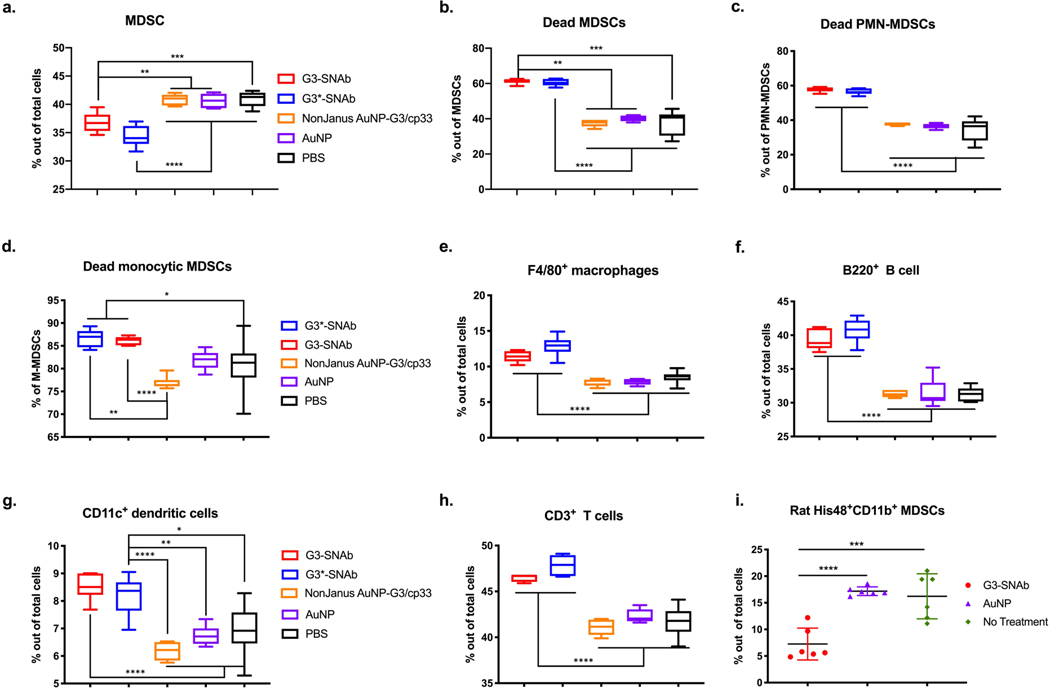Figure 4.
MDSC-SNAbs induce antibody-like killing of mouse and rat MDSCs in the presence of effector cells, such as macrophages. (a-h) In a mouse splenocyte-suspension assay, the single cell suspension from the spleens of 4T1-tumor-bearing mice were treated with equal concentration of various nanoparticle formulations for 24 hours. The cells were then stained with fluorescent antibodies and fixable viability dye and analyzed by flow cytometry for the total percentage (a) of live and dead MDSC (PMN-MDSC and monocytic MDSCs), the percentage of dead MDSCs (b), dead PMN-MDSCs (CD11b+Ly6G+Ly6Clow) (c) or dead M-MDSCs (CD11b+Ly6G-Ly6Chigh) (d) out of corresponding cell populations, and the percentages of CD11b+F4/80+macrophages (e), CD3-B220+B cells (f), CD11b+CD11c+DCs (g), and CD3+T cells (h) out of total cells. (i) Rat MDSC and CD11b+ monocytes sorted from peripheral blood mononuclear cell (PBMC) of rats with femoral segmental defects were cultured ex vivo at 1:10 ratio and treated with MDSC-SNAbs or control treatments for 24 hours. The percentages of MDSCs (CD11b+His48+) in the co-culture after treatment were measured by flow cytometry. Data are presented in box plots (n=6) or presented by individual values with mean and standard deviation (n=6). Significance was determined using one-way ANOVA with Tukey post-hoc test (**** p<0.0001, *** p<0.0002, ** p<0.0021, * p<0.0332). AuNPs are nonJanus streptavidin coated Au nanoparticles. NonJanus AuNP-G3/cp33 nanoparticles are AuNPs coated with randomly distributed G3 and cp33. G3-SNAbs and G3*-SNAbs are Janus G3-AuNP-cp33 or G3*-AuNP-cp33 nanoparticles targeting MDSCs.

